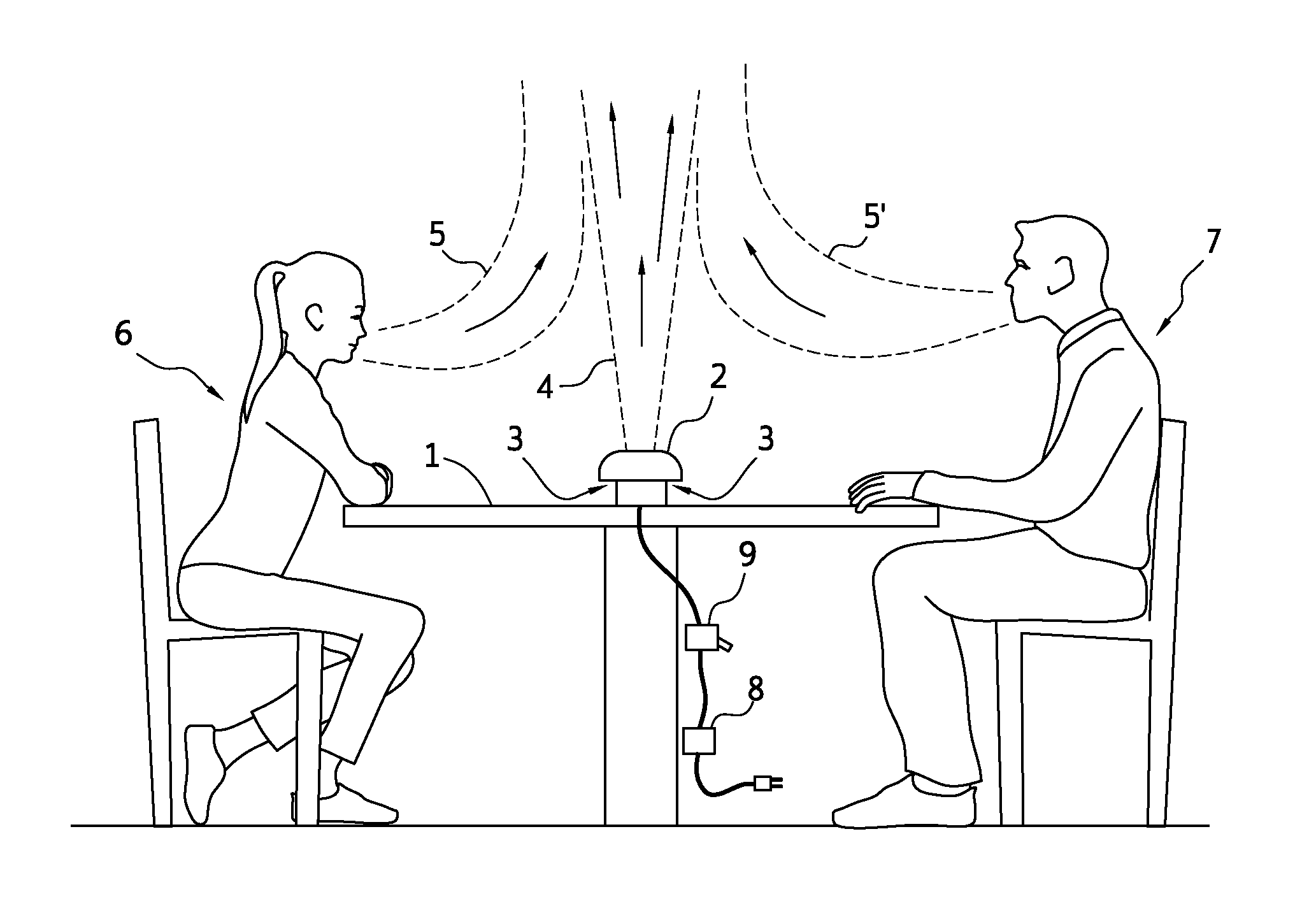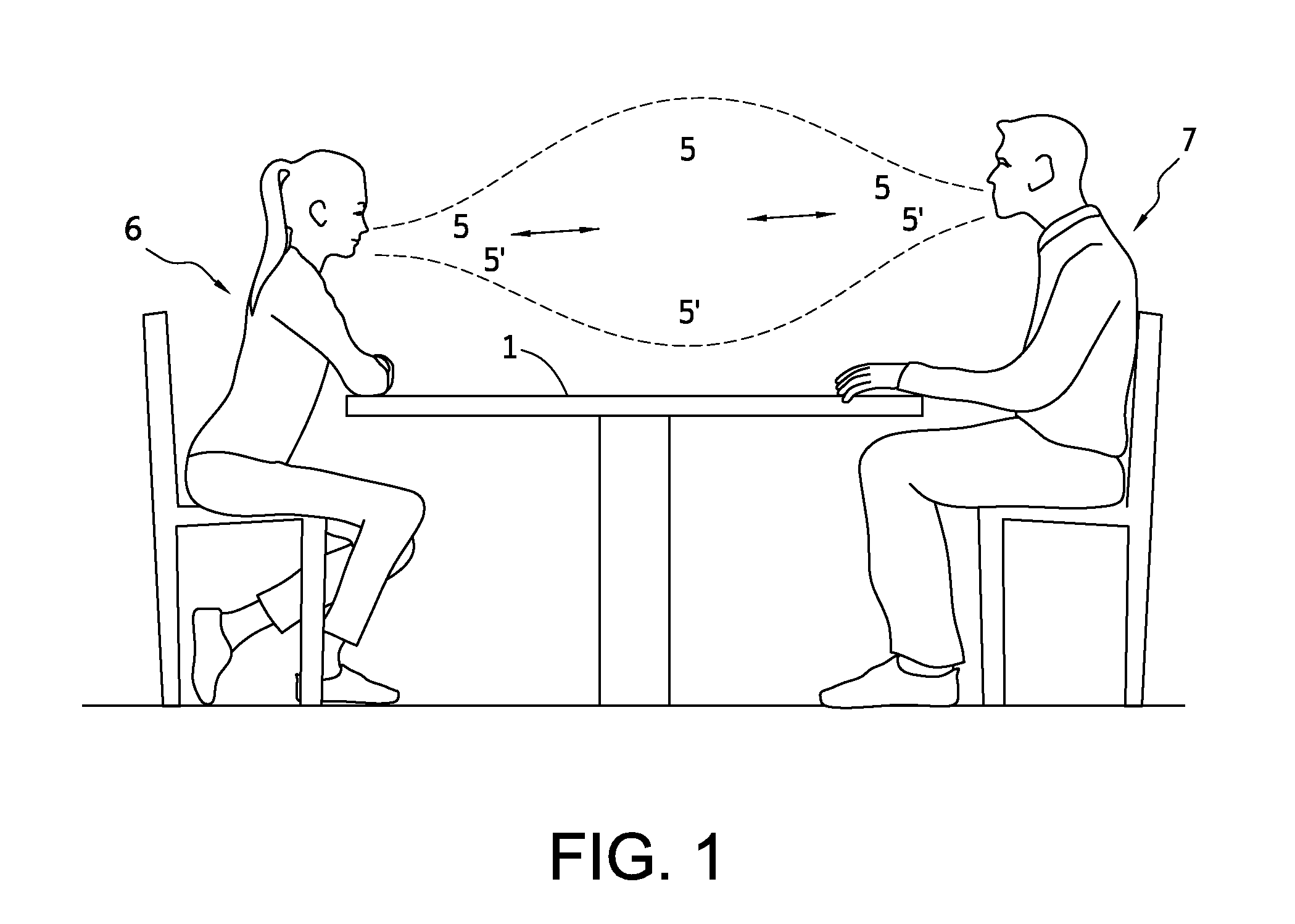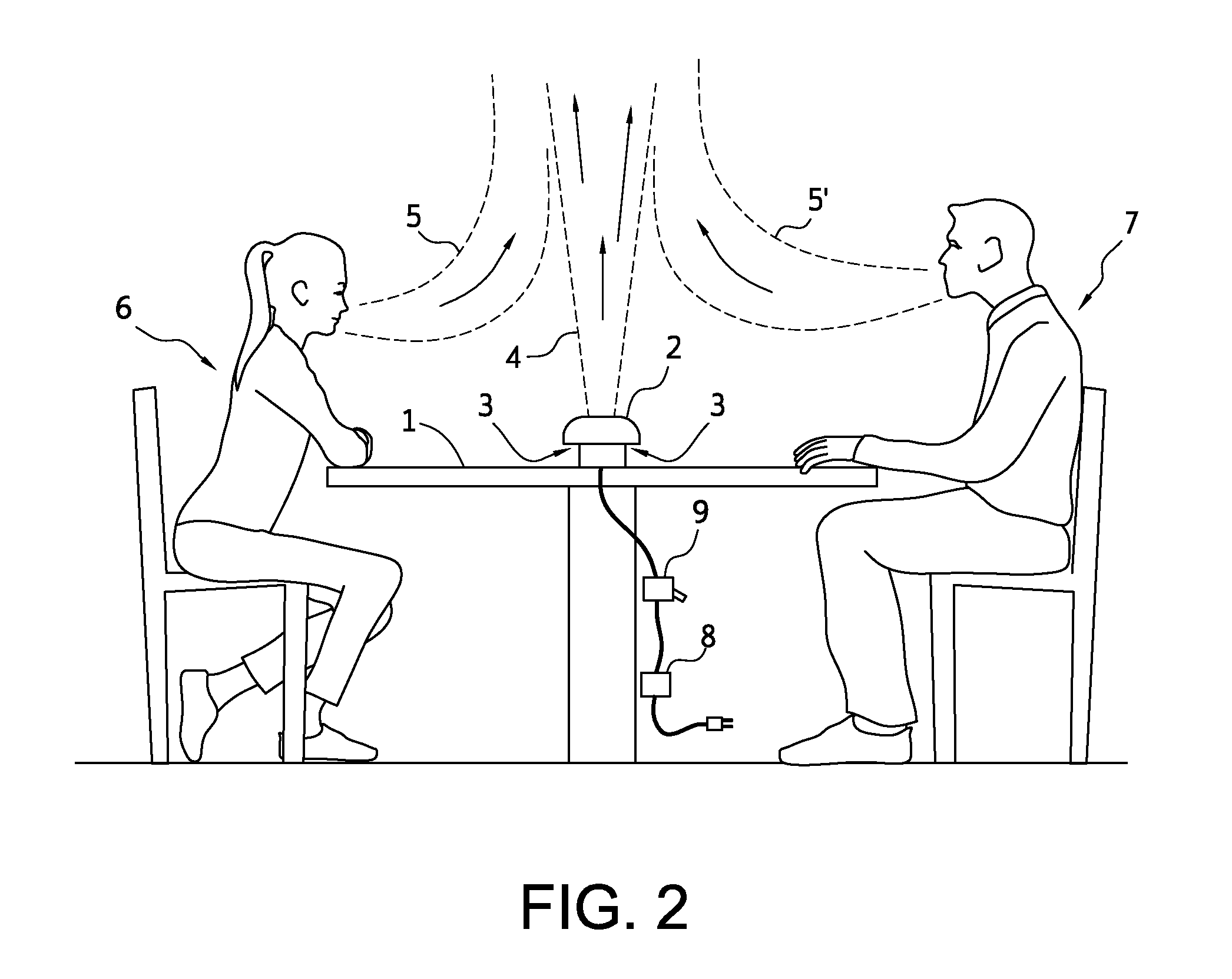Close proximity airborne influenza/pathogen mitigator
a technology of pathogens and close proximity, which is applied in the field of close proximity airborne influenza/pathogen mitigators, can solve the problems of impracticality, inability to achieve in many workplace settings, and insufficient protection of the public at large, and achieves the effect of convenient portability
- Summary
- Abstract
- Description
- Claims
- Application Information
AI Technical Summary
Benefits of technology
Problems solved by technology
Method used
Image
Examples
Embodiment Construction
[0034]According to the present disclosure, preferred embodiments contemplate an apparatus preferably mounted such that an air flow from the device is interposed between at least two individuals to form an unobtrusive air barrier to exhaled pathogens from any individual at normal conversational distances apart. The term “unobtrusive” connotes that the air cannot flow at such a rate that the barrier zone air flow is readily sensed by the individuals and, secondly, the blower providing such flow needs to be recognized as being quiet enough for operation in close proximity to the users. This will vary somewhat depending on the background noise levels at the workstation or other location involved. Air exits from the device in such a way as to form a continuous barrier of suitable predetermined dimensions such that the exhaled air flow from each individual intersects with the barrier and is deflected.
[0035]With the understanding that the air ejected from an orifice slows and expands as it...
PUM
| Property | Measurement | Unit |
|---|---|---|
| distance | aaaaa | aaaaa |
| size | aaaaa | aaaaa |
| aerodynamic diameter | aaaaa | aaaaa |
Abstract
Description
Claims
Application Information
 Login to View More
Login to View More - R&D
- Intellectual Property
- Life Sciences
- Materials
- Tech Scout
- Unparalleled Data Quality
- Higher Quality Content
- 60% Fewer Hallucinations
Browse by: Latest US Patents, China's latest patents, Technical Efficacy Thesaurus, Application Domain, Technology Topic, Popular Technical Reports.
© 2025 PatSnap. All rights reserved.Legal|Privacy policy|Modern Slavery Act Transparency Statement|Sitemap|About US| Contact US: help@patsnap.com



